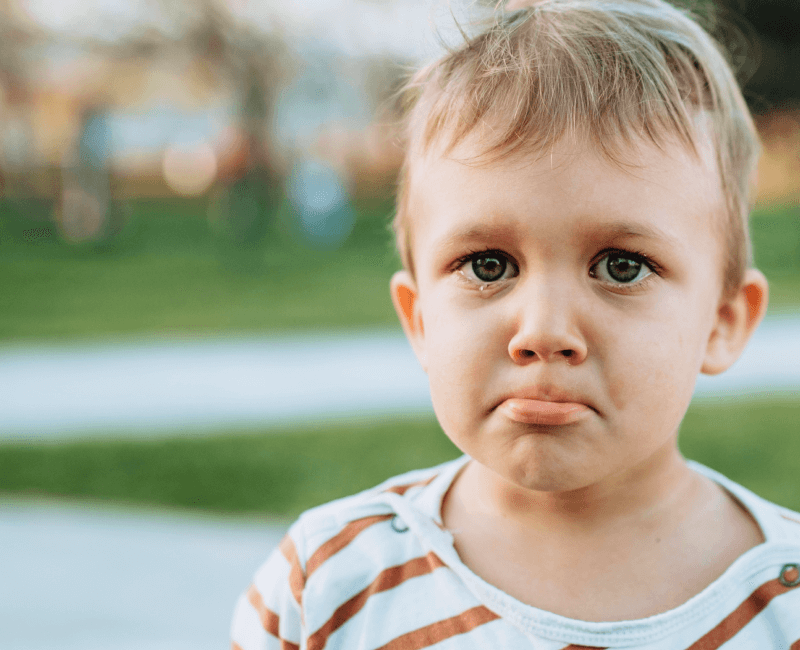Supporting children and young people with PTSD
Post-Traumatic Stress Disorder (PTSD) can be a challenging condition for children and young people to navigate, especially as they grow and develop. As a parent, you play a crucial role in supporting your child's journey towards resilience and empowerment. This guide will explore effective strategies to help children and young people with PTSD thrive, offering insights into coping mechanisms, life skills, and resources for managing PTSD symptoms at various stages of their development.
Understanding PTSD in Children and Young People
Before diving into strategies for building resilience, it's essential to understand how PTSD manifests in children and young people. PTSD symptoms can vary but often include:
- Intrusive memories or flashbacks
- Avoidance of trauma-related triggers
- Negative changes in mood and thinking
- Heightened reactivity and arousal
These PTSD symptoms can significantly impact a child or young person's daily life, affecting their relationships, academic performance, and overall wellbeing. Recognising these signs is the first step in providing effective support.
Promoting Age-Appropriate Coping Mechanisms
Empowering children and young people with PTSD involves helping them develop coping strategies suitable for their age. Here are some effective techniques:- Mindfulness and Grounding Exercises: Teach age-appropriate mindfulness practices to stay present and manage overwhelming PTSD symptoms. For younger children, this might involve simple breathing exercises, while teens can learn more complex grounding techniques.
- Expressive Activities: Encourage regular journaling, art or play therapy as ways to process emotions and track PTSD symptoms over time. These practices can help identify triggers and patterns in an age-appropriate manner.
- Physical Activity: Regular exercise can significantly reduce stress and improve mood. Help your child find physical activities they enjoy, whether it's playground games, dance, or team sports.
- Creative Outlets: Art, music or other creative pursuits can provide healthy ways for children and young people to express emotions and cope with PTSD symptoms.
- Relaxation Techniques: Teach simple relaxation exercises that can help manage anxiety and panic attacks associated with PTSD, adjusting the complexity based on the child's age.
Developing Essential Life Skills for Different Ages
As children grow and young people transition to independence, certain life skills become crucial for managing PTSD. Time management is key - it helps create structured routines to reduce stress and provide a sense of control, adapting the level of structure to the child's age and needs. Teaching self-care practices is equally important. Emphasise the significance of regular sleep, healthy eating, and personal hygiene in managing PTSD symptoms.
Communication skills play a vital role in recovery. Encouraging open dialogue about feelings and needs - both within the family and with other trusted adults - helps children and young people articulate their experiences as they grow. Problem-solving abilities are also crucial. Guide your child in breaking down challenges into manageable steps, which will help foster a sense of capability.
Introducing various stress management techniques can be incredibly beneficial. This might involve simple deep breathing exercises for younger children, while teens can learn more complex strategies like progressive muscle relaxation.
Balancing Support and Independence
As a parent, finding the balance between support and encouraging independence can be challenging. Here are some strategies:
- Gradual Exposure: Encourage your child to face fears gradually, starting with less anxiety-provoking situations and slowly working up to more challenging ones, always considering their age and readiness.
- Collaborative Goal-Setting: Work together to set realistic, achievable goals that promote growth while acknowledging PTSD symptoms, and adjusting expectations based on age.
- Regular Check-Ins: Establish a routine for checking in, but allow your child to take an increasing lead in these conversations as they mature.
- Respecting Boundaries: Recognise your child's need for personal space and autonomy as they grow, even as you remain available for support.
- Celebrating Successes: Acknowledge and celebrate progress, no matter how small, to build confidence and motivation at every stage of development.
Navigating School and Social Environments
For children and young people with PTSD, school and social situations present unique challenges. Here's how you can support them:- Understanding Accommodations: Familiarise yourself and your child with available accommodations in educational settings, from the early years through to further education.
- Encouraging Self-Advocacy: Empower your child to communicate their needs to teachers, friends or a therapist, helping them develop this skill over time.
- Social Skills Development: Help explore and practise social skills that align with their interests and accommodate their PTSD symptoms, adjusting strategies as they grow.
- Building a Support Network: Encourage involvement in age-appropriate support groups or school organisations that foster understanding and community.
- Preparing for Triggers: Work together to develop strategies for managing PTSD symptoms in new environments, whether it's a new classroom, a sleepover, or a school trip.
Seeking Professional Support
While your support is invaluable, professional help is often crucial in managing PTSD symptoms in children and young people. At Mable, our counsellors are experts in working with children and young people who are experiencing PTSD. They’re highly qualified and experienced in providing compassionate, age-appropriate support to help young people manage their PTSD symptoms effectively. If you're considering professional help for your child, we encourage you to reach out to us. Our team can provide personalised guidance and support tailored to your child's unique needs and experiences.
Building Resilience
Building resilience in children and young people with PTSD is a journey that requires patience, understanding, and consistent support. By empowering your child with age-appropriate coping strategies, life skills and resources, you're providing them with the tools to thrive despite their PTSD symptoms.
Remember, progress may not always be linear, but with the right support and perseverance, children and young people with PTSD can lead fulfilling lives and reach their full potential.
With the right tools and support, your child can build the resilience needed to thrive while managing their PTSD symptoms effectively at every stage of their development.
- General mental health (32)
- Counselling (25)
- Anxiety (11)
- Generalised anxiety (10)
- Depression (7)
- Anger (4)
- Relationship Issues (4)
- Self-Harm (4)
- Suicidal Thoughts (4)
- Autism (3)
- Classroom Behaviour (3)
- Eating Disorders (3)
- Eating Issues (3)
- Loss (3)
- Phobias (3)
- Safeguarding (3)
- School Issues (3)
- LGBTQ+ (2)
- SEMH (2)
- SENCOs (2)
- Secondary & Sixth Form Schools (2)
- AAC (1)
- Absenteeism (1)
- Autism Support (1)
- Looked After/Adopted (1)
- OCD (1)
- Primary Schools (1)
- Social Communication (1)
- Trauma (1)
You may also like
These related stories

How to Deal with your Child's Tantrums

Helping Your Child to be Body Positive
